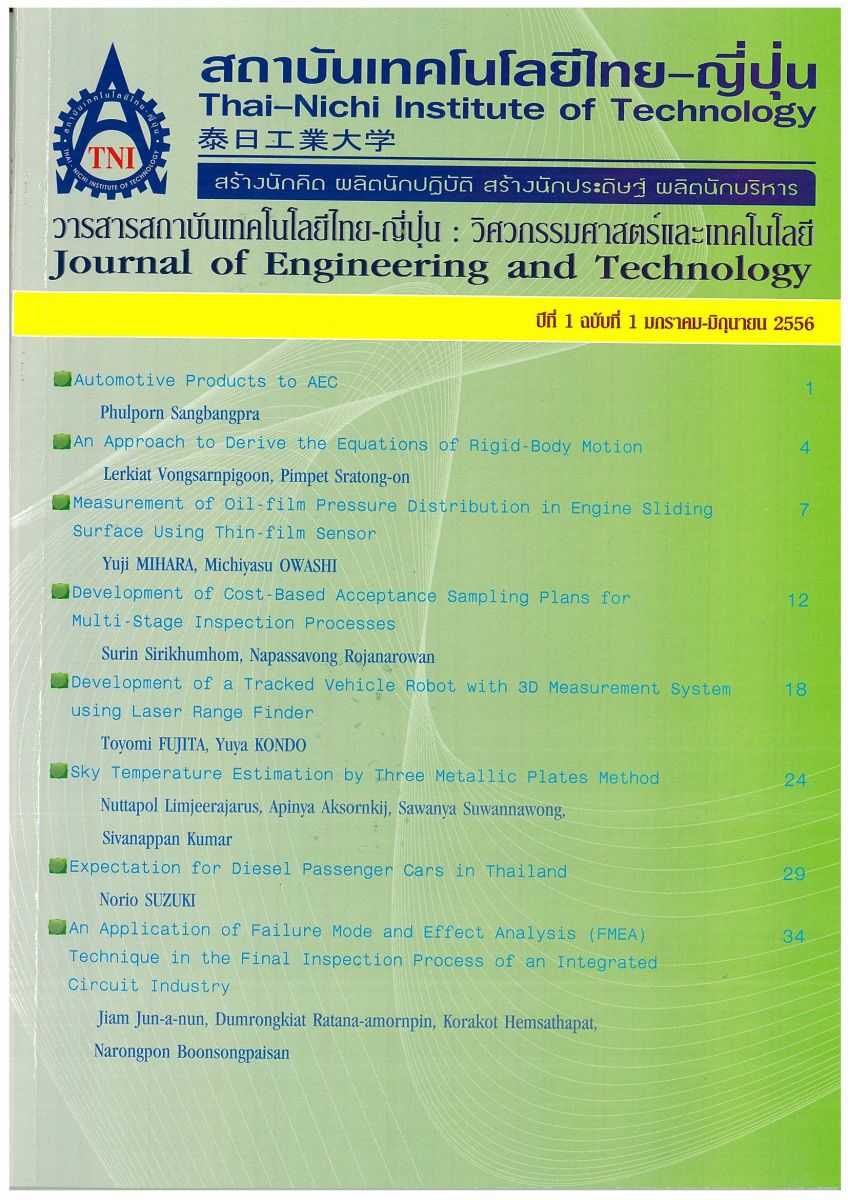Role of \alpha -Relaxation and Glass Transition in Understandings Stickiness of Milk Solids
Main Article Content
Abstract
Stickiness of powder particles is often responsible for their impaired flow characteristics. Stickiness resulted from glass transition showing a relationship with mechanical -relaxations, and stickiness occurred differently in dairy solids modified in their lactose and protein contents. Glass transition,
-relaxation and stickiness properties of milk solids systems were related to their solids composition and water plasticization. Lactose showed high magnitudes of mechanical
-relaxations, which were less pronounced at the lower lactose contents. There was a correlation with the magnitudes of mechanical properties above the glass transition and the steepness of the increase of torque values at sticky-point temperature (STP). The results indicated that mechanical
-relaxations were significant to understanding flow characteristics and the stickiness behavior of food solids. Stickiness can be reduced by mixing proteins to dairy solids. The present study provided useful information for the control of particle flow and powder stickiness in dairy and food powder industries.
Article Details
Article Accepting Policy
The editorial board of Thai-Nichi Institute of Technology is pleased to receive articles from lecturers and experts in the fields of engineering and technology written in Thai or English. The academic work submitted for publication must not be published in any other publication before and must not be under consideration of other journal submissions. Therefore, those interested in participating in the dissemination of work and knowledge can submit their article to the editorial board for further submission to the screening committee to consider publishing in the journal. The articles that can be published include solely research articles. Interested persons can prepare their articles by reviewing recommendations for article authors.
Copyright infringement is solely the responsibility of the author(s) of the article. Articles that have been published must be screened and reviewed for quality from qualified experts approved by the editorial board.
The text that appears within each article published in this research journal is a personal opinion of each author, nothing related to Thai-Nichi Institute of Technology, and other faculty members in the institution in any way. Responsibilities and accuracy for the content of each article are owned by each author. If there is any mistake, each author will be responsible for his/her own article(s).
The editorial board reserves the right not to bring any content, views or comments of articles in the Journal of Thai-Nichi Institute of Technology to publish before receiving permission from the authorized author(s) in writing. The published work is the copyright of the Journal of Thai-Nichi Institute of Technology.
References
C. Bengoecha, A. Arrachid, A. Guerrero, S.E. Hill, J.R. Mitchell, “Relationship between glass transition temperature and the melt flow behavior for gluten, casein and soya,” Journal of Cereal Science, vol.45, pp. 275-248, 2007.
L.E. Chuy, T.P. Labuza, “Caking and stickiness of dairy-based food powders as related to glass transition,” Journal of Food Science, vol.59, pp. 43-46, 1994.
G.E. Downton, J.L. Flores-Luna, C.J. King, “Mechanism of stickiness in hygroscopic amorphous powders,” Industrial and Engineering Chemistry Fundamentals, vol.21, pp.447-451, 1982.
Y.H. Roos, M. Karel, “Phase transitions of mixtures of amorphous polysaccharides and sugars,” Biotechnology Progress, vol.7, pp.49-53, 1991.
C.A. Angell, “Formation of glasses from liquids and biopolymers,” Science, vol.267 (5206), pp.1924-1935, 1995.
R.A. Talja, Y.H. Roos, “Phase and state transition effects on dielectric, mechanical, and thermal properties of polyols,” Thermochimica Acta, vol.380, pp.109-121, 2001.
S. Nattiga, Y.H. Roos, “Roles of water and solids composition in the control of glass transition and stickiness of milk powders,” Journal of Food Science, vol.75(5), pp.E285-E296, 2010.
K. Jouppila, J. Kansikas, Y.H. Roos, “Glass transition, water plasticization, and lactose crystallization in skim milk powders,” Journal of Dairy Science, vol.80, pp. 3152-3160, 1997.
P.G. Royall, C. Huang, S.J. Tang, J. Duncan, G. Van-de-Velde, M.B. Brown, “The development of DMA for the detection of amorphous content in pharmaceutical powder materials,” International Journal of Pharmaceutics, vol.301, pp.181-191, 2005.
N. Özkan, N. Walisinghe, X.D. Chen, “Characterization of stickiness and cake formation in whole milk and skim milk powders,” Journal of Food Engineering, vol.55, pp.293-303, 2002.
M.K. Haque, Y.H. Roos, “Water sorption and plasticization behavior of spray-dried lactose/protein mixtures,” Journal of Food Science, vol.69(8), pp.384-391, 2004.
K. Jouppila, Y.H. Roos, “Glass transition and crystallization in milk powders,” Journal of Dairy Science, vol.77, pp.2907-2915, 1994.
L. Ozmen, T.A.G. Langrish, “Comparison of glass transition temperature and sticky point temperature for skim milk powder,” Drying Technology, vol.20(6), pp.1177-1192, 2002.
B.R. Bhadari, N. Datta, T. Howes, “Problems associated with spray drying of sugar-rich foods,” Drying Technology, vol.15(2), pp.671-684, 1997.
B.R. Bhandari, T. Howes, “Implication of glass transition for the drying and stability of dried foods,” Journal of Food Engineering, vol.40, pp.71-79, 1999.
E. Lopez-Diez, S. Bones, “An investigation of the water-binding properties of protein+sugar systems,” Physics in Medicine and Biology, vol.45, pp.3577-3588, 2000.
R.A. Murti, A.H.J. Paterson, D.L. Pearce, J.E. Bronlund, “Stickiness of skim milk powder using the particle gun technique,” International Dairy Journal, vol.19, pp.137-141, 2009.
J.M. Aguilera, J.M. del Valle, M. Karel, “Caking phenomena in amorphous food powders,” Trends in Food Science and Technology, vol.6, pp.149-155, 1995.
D.A. Wallack, C.J. King, “Stickiness and agglomeration of hygroscopic, amorphous carbohydrate and food powders,” Biotechnology Progress, vol.4, pp.31-35, 1988.
B. Adhikari, T. Howes, B.J. Wood, B.R. Bhandari, “The effect of low molecular weight surfactants and proteins on surface stickiness of sucrose during powder formation through spray drying,” Journal of Food Engineering, vol.94, pp.135-143, 2009.


